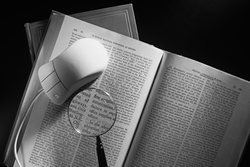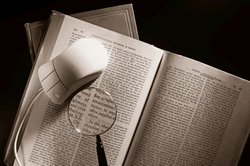| About Us | Contact Us | Testimonials | File Specs. | Printing 101 | Find Designer | Templates | Glossary | FAQ | Login |

|
|
Printing 101Baby Steps To Print Purchasing Know HowThe Printing Crash Course - Printing SchoolDuotones, Duographs, Tritones and QuadtonesDuotone or Duograph - Two halftone negatives made at different screen angles from the same copy and then consecutively printed in register to produce a two-tone effect. When two colors are utilized to form a photographic image, it is called a duo-tone, meaning two tones. The tones of the image can be varied from a subtle hint of a color where only the darker parts of the image (Shadow areas) are heavy in the secondary color to a very enhanced secondary color usage, where the image is more color rather than black and white. Usually the primary color used is black, but deviations from this is also very common. By placing a flat tine behind a half-tone, one can achieve a "fake duo-tone" also known as a duo-graph. Tri-tones and Quad-tones are images that are enhanced from a halftone image by making three or four (respectively) different images, at different contrasts and screen angles. This process also utilizes three or four different colors to achieve a desired look
Tri-tones and Quad-tones do get fairly expensive and going to CMYK or process color printing is highly recommended. To maintain getting cheap pricing on your brochures, shell sheets, flyers, pamphlets, inserts, business cards and post cards please refrain from using non CMYK tri-tone and quad-tone images. Duotones can be converted to CMYK model and still retain the desired effect for the half-tone image. | |||
Copyright © www.printoutlet.us
Date Updated: Saturday 05th of July 2025 09:52:44 PM
 US Website
US Website  Canadian Website
Canadian Website




